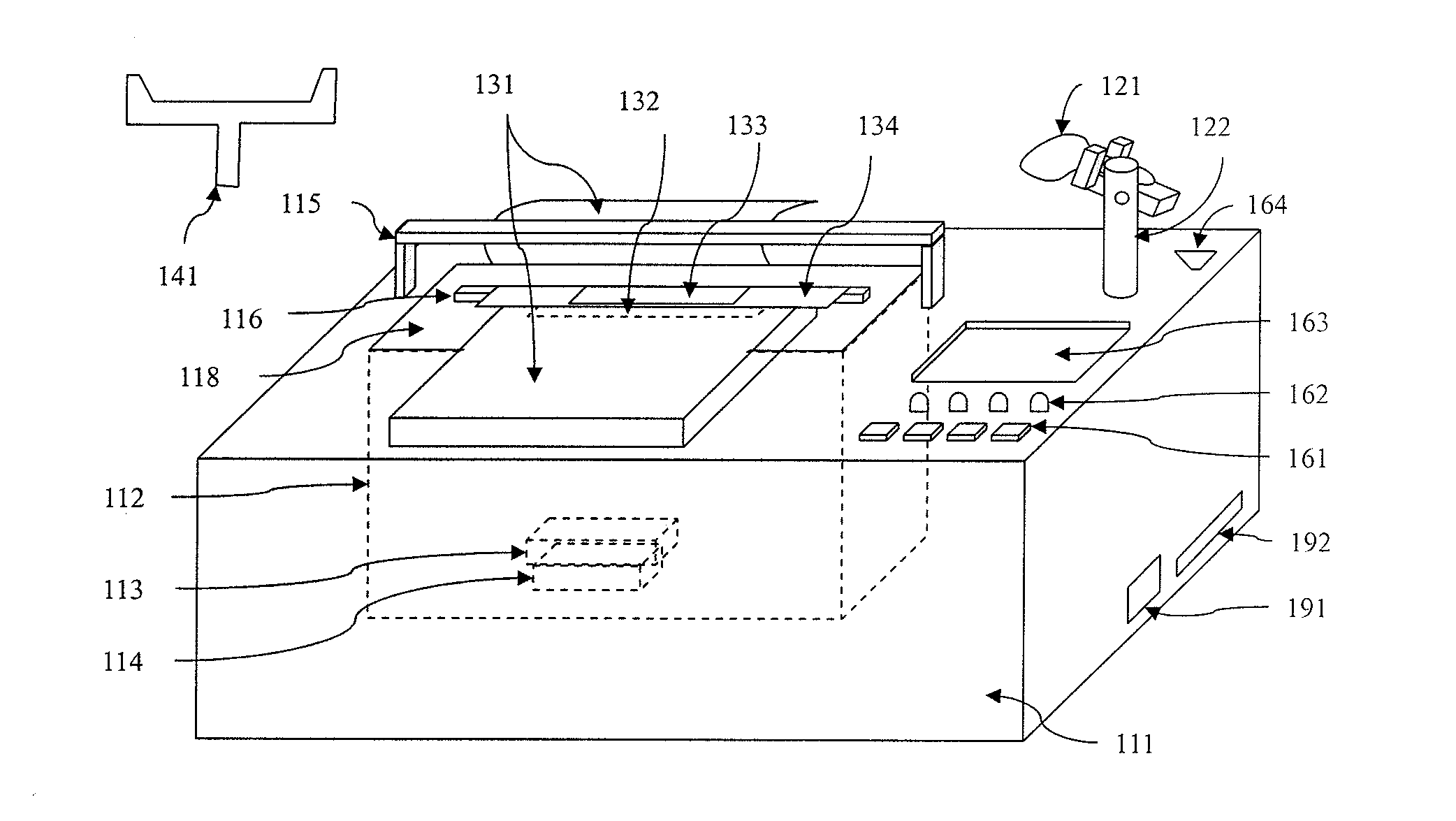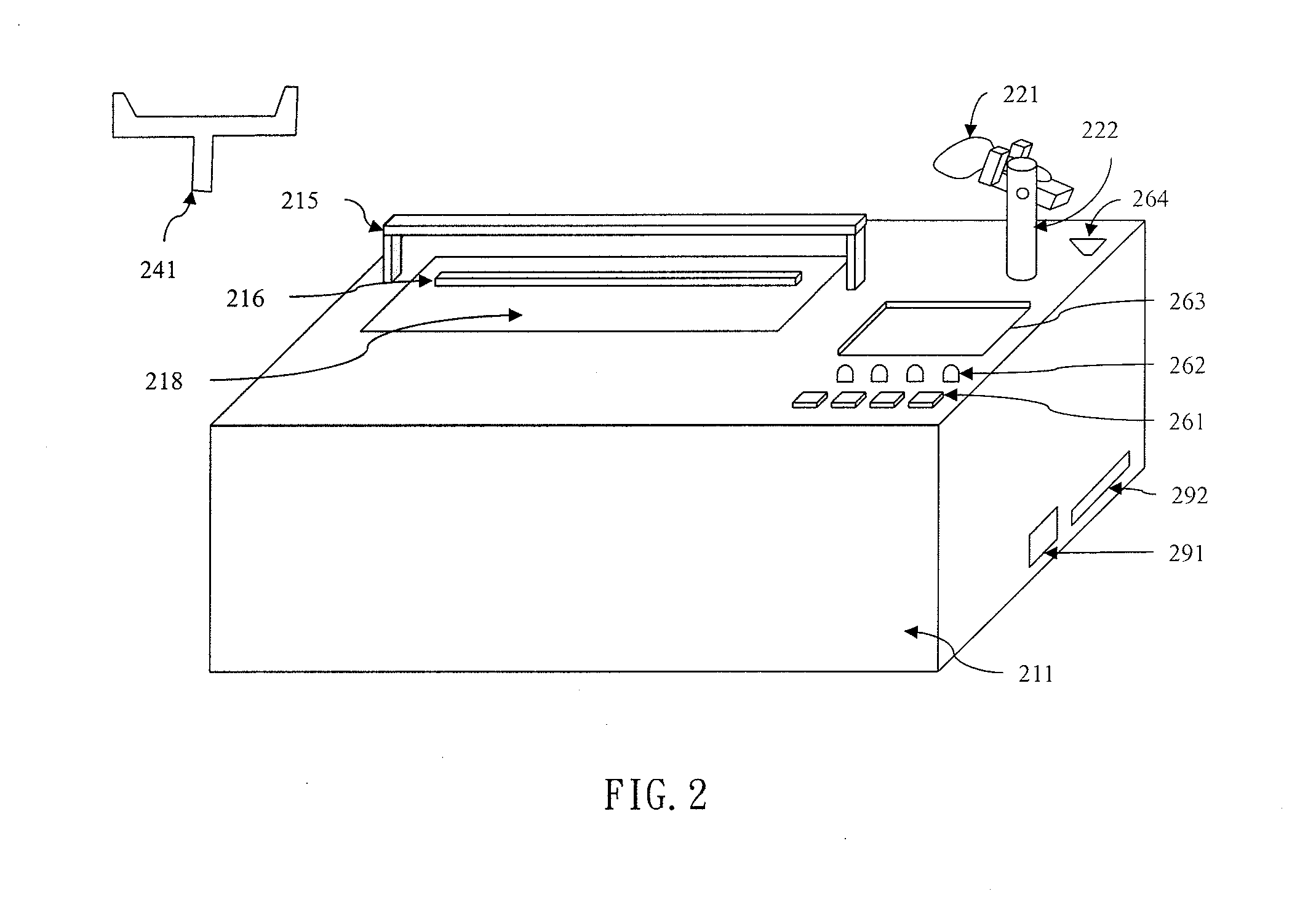RFID-based book tagging device and method
a technology of rfid and tag, which is applied in the field of rfid-based book tagging device and method, can solve the problems of large difference in the position of isbns or barcodes on books, and the difficulty of attaching the rfid tag to an open book that is not secured by hand or by holding devices, and achieves the effect of optimizing the detection resul
- Summary
- Abstract
- Description
- Claims
- Application Information
AI Technical Summary
Benefits of technology
Problems solved by technology
Method used
Image
Examples
Embodiment Construction
[0022]For your esteemed members of reviewing committee to further understand and recognize the fulfilled functions and structural characteristics of the invention, several exemplary embodiments cooperating with detailed description are presented as the follows.
[0023]Please refer to FIG. 1 and FIG. 2, which are a schematic diagram and a three-dimensional diagram showing an RFID-based book tagging device according to the present invention. As shown in FIG. 1 and FIG. 2, the RFID-based book tagging device includes a shielding box 112 which has at least one antenna 113 disposed therein. It is noted that each of the antenna 113 can either be integrated with an RFID reader 114, or can be electrically connected to the RFID reader 114 by a coaxial cable. In a condition when the antenna 113 is electrically connected to the RFID reader 114 by a coaxial cable, the RFID reader 114 can be disposed either inside the shielding box 112 or outside the shielding box at will as required, whichever is ...
PUM
 Login to View More
Login to View More Abstract
Description
Claims
Application Information
 Login to View More
Login to View More - R&D
- Intellectual Property
- Life Sciences
- Materials
- Tech Scout
- Unparalleled Data Quality
- Higher Quality Content
- 60% Fewer Hallucinations
Browse by: Latest US Patents, China's latest patents, Technical Efficacy Thesaurus, Application Domain, Technology Topic, Popular Technical Reports.
© 2025 PatSnap. All rights reserved.Legal|Privacy policy|Modern Slavery Act Transparency Statement|Sitemap|About US| Contact US: help@patsnap.com



